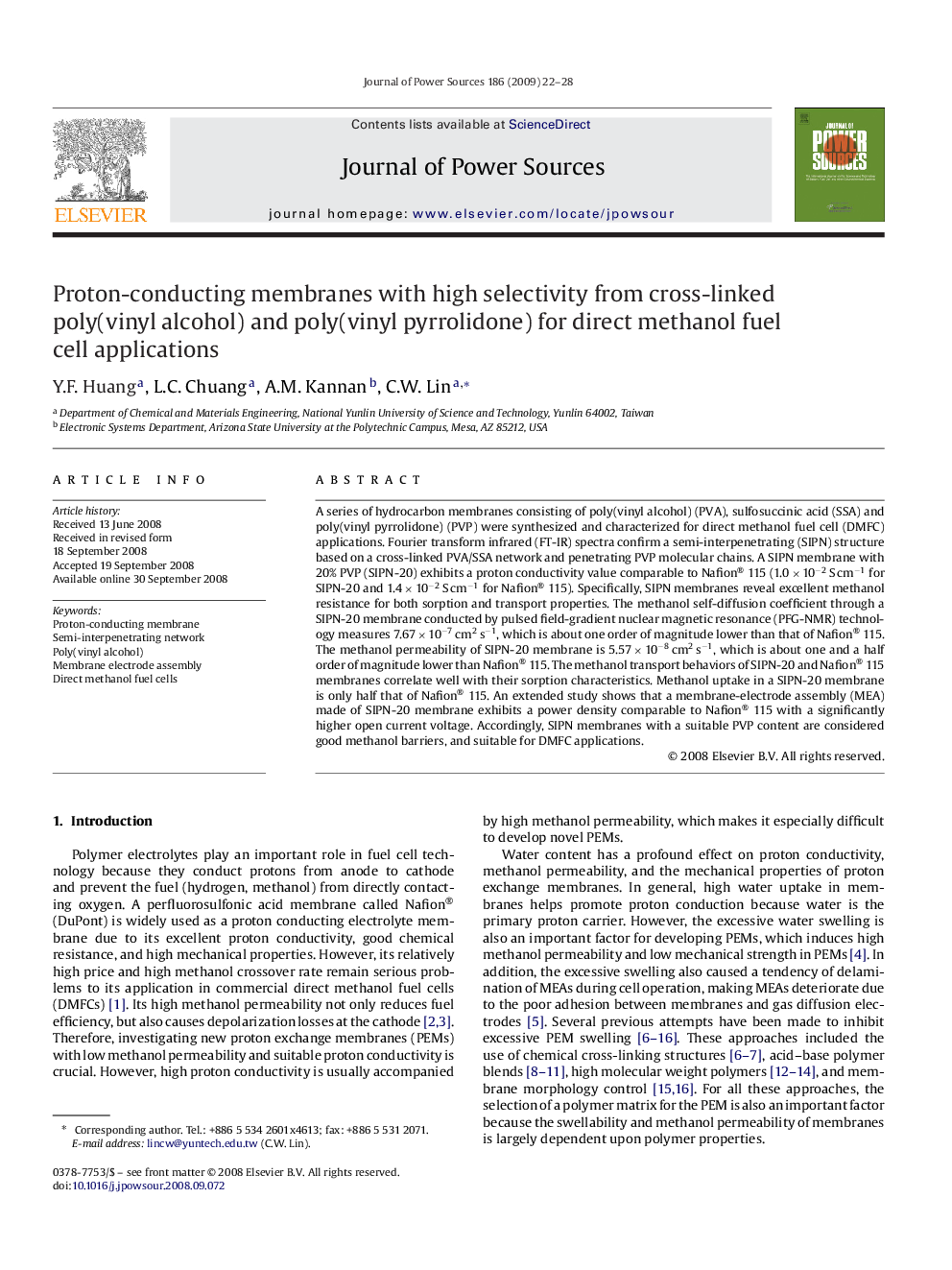| Article ID | Journal | Published Year | Pages | File Type |
|---|---|---|---|---|
| 1289889 | Journal of Power Sources | 2009 | 7 Pages |
A series of hydrocarbon membranes consisting of poly(vinyl alcohol) (PVA), sulfosuccinic acid (SSA) and poly(vinyl pyrrolidone) (PVP) were synthesized and characterized for direct methanol fuel cell (DMFC) applications. Fourier transform infrared (FT-IR) spectra confirm a semi-interpenetrating (SIPN) structure based on a cross-linked PVA/SSA network and penetrating PVP molecular chains. A SIPN membrane with 20% PVP (SIPN-20) exhibits a proton conductivity value comparable to Nafion® 115 (1.0 × 10−2 S cm−1 for SIPN-20 and 1.4 × 10−2 S cm−1 for Nafion® 115). Specifically, SIPN membranes reveal excellent methanol resistance for both sorption and transport properties. The methanol self-diffusion coefficient through a SIPN-20 membrane conducted by pulsed field-gradient nuclear magnetic resonance (PFG-NMR) technology measures 7.67 × 10−7 cm2 s−1, which is about one order of magnitude lower than that of Nafion® 115. The methanol permeability of SIPN-20 membrane is 5.57 × 10−8 cm2 s−1, which is about one and a half order of magnitude lower than Nafion® 115. The methanol transport behaviors of SIPN-20 and Nafion® 115 membranes correlate well with their sorption characteristics. Methanol uptake in a SIPN-20 membrane is only half that of Nafion® 115. An extended study shows that a membrane-electrode assembly (MEA) made of SIPN-20 membrane exhibits a power density comparable to Nafion® 115 with a significantly higher open current voltage. Accordingly, SIPN membranes with a suitable PVP content are considered good methanol barriers, and suitable for DMFC applications.
